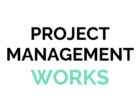More and more companies are making the move to Agile project management. With an estimated 52% of companies using Agile for around half of their projects, and with a success rate of around 64%, it isn’t hard to see why. The Agile approach uses short development cycles, called sprints, which offer a focus on improvement that is continual. Becoming an Agile project manager has some benefits, but there are also a fair few challenges along the way. If you are looking to transition to Agile, then here are some tips from Parallel Project Training to get you started.
Learn to delegate more
One of the main aspects you will find with Agile is that every team member is responsible for the project being a success. This is now a decentralised responsibility and something that isn’t always easy to get used to. Some control points will remain however, there is more of a shared feeling with Agile project management.
Support everyone
It is the role of the project manager to support all of the team members throughout the project, ensuring that everyone is focused on their responsibilities and role.
Create an environment that is right
APM, PMP and PRINCE2 training courses will all tell you one thing, and that is that you must foster a collaborative environment. This is one that creates a mindset that accepts small failures and uses them as a learning tool for the future.
Encourage an environment of open communication
In order for any project to be successful, there needs to be good and open communication. It is an essential ingredient in the Agile method. It is important to have a communication plan in place and ensure that there are guidelines for your team, so they are aware of all the methods available and that they use them to keep other team members fully updated on progress throughout the project.
Practice dependency management
Dependency management is another critical element of agile project management. This will help to lower project slippages. There are several ways in which you can do this, from dependency boards to periodic meetings.
Handle risks as soon as possible
Both Agile and more traditional forms of risk management techniques require the project manager to monitor the project risks. The difference with Agile is that risks are addressed as soon as they are noticed. The nature of Agile allows for the tackling of risks head-on.
Utilise a pragmatic approach to documentation
Adopting a pragmatic approach to documentation is important for all project managers. It is important to make sure that the right amount of useful documentation is created and that this can evolve incrementally during the life of the project.
Take a training course
One of the best ways to fully understand the Agile methodology is to take a training course. This will give you a greater depth of understanding on how you can implement the different ideas into your projects and help to switch you to the right mindset.


